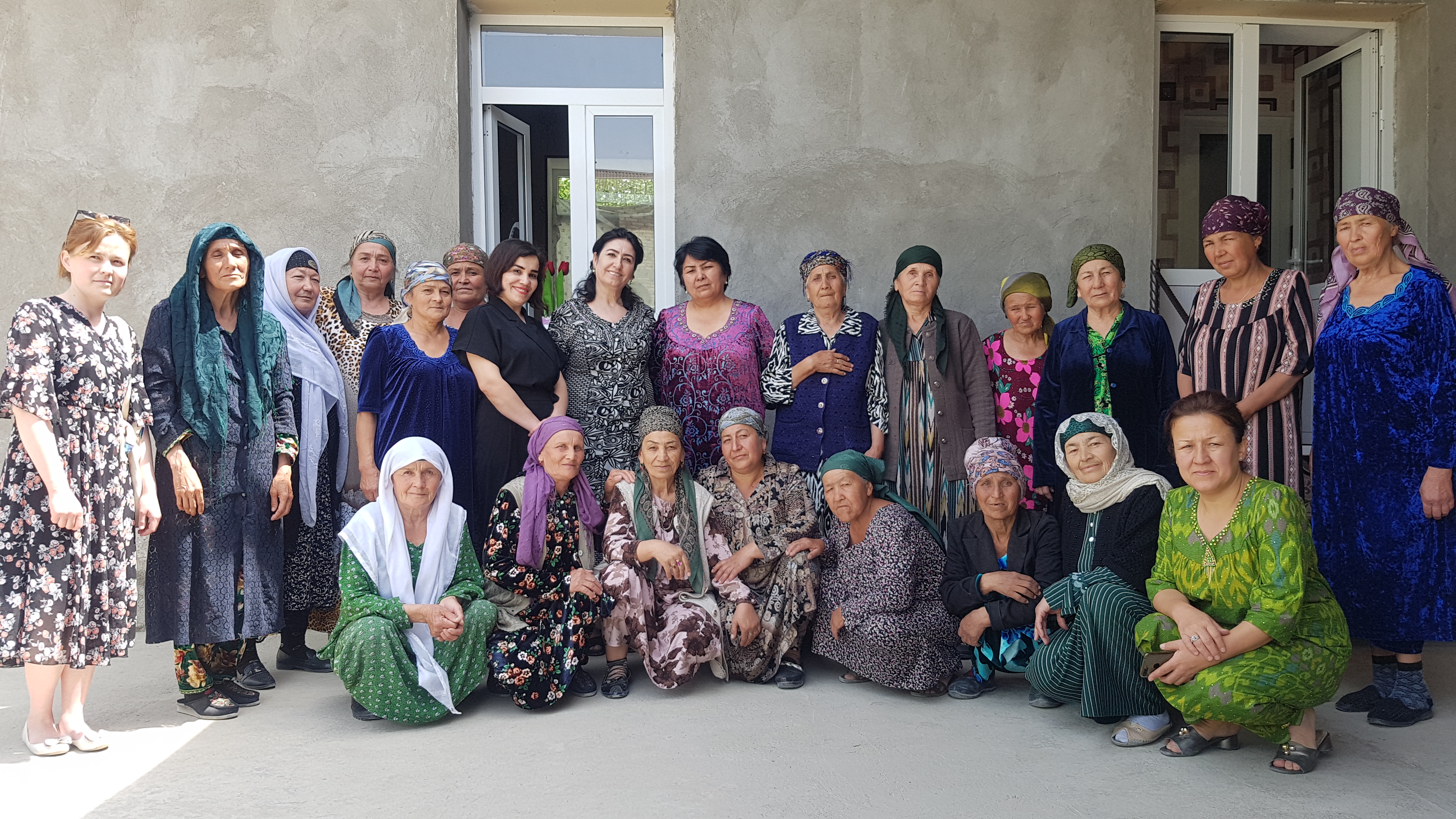Preventing violence against women living with disabilities in Tajikistan
Date:
“With your help, I changed my outlook on life” – Nigora*, a participant of the project led by the Women’s Center “Gulrukhsor”

Globally, women and girls living with disabilities are at least two to three times more likely than other women and girls to experience violence, including in institutions and by family members, intimate partners and caregivers,[1] as a result of stigma linked to disability, discrimination and harmful gender norms. In Tajikistan, where ableism is widespread, this problem is exacerbated because women are often blamed for giving birth to a child with disabilities and abandoned without support.[2]
To tackle this issue, the public organization Women’s Center “Gulrukhsor” (WCG), supported by a grant from the UN Trust Fund to End Violence against Women, is leading a project in Tajikistan to prevent violence against women living with disabilities by supporting them and their caretakers, including those from rural and Uzbek ethnic communities. It uses an approach that aims to leave no woman or girl behind and addresses the different, intersecting forms of discrimination and violence faced by marginalized women in the country.
Self-empowerment
WCG organizes peer support groups as a safe space for women and girl survivors of violence to interact and overcome past trauma. Notably, survivors lead these groups, which encourages others to speak about their experiences and seek support.
Group facilitators speak in the local Uzbek language to ensure that everyone can fully participate. They use a variety of activities that enable participants to engage regardless of their disabilities or education levels, including role-play to facilitate self-learning and discovery. The project has found that by using drawings, diagrams, poems and flowers, women can fully express themselves and describe their family relationships and life goals.
As a result of such activities, survivors are equipped to report cases of violence, seek help and make decisions for themselves. Project participants report increased confidence, agency and self-esteem, and refuse to be defined by their trauma or disability. Gulrukhsor Abdullaeva, Director of WCG explains: “Women said that these groups were the first time they had felt and been treated as a person.”
Working with key stakeholders
WCG also organizes activities with local government officials to sensitize them about their role and responsibilities in preventing violence against women and girls, its long-term impact and various forms. Consequently, women feel better protected and are empowered to speak out against violence.
Preventing violence
As part of its prevention strategy, WCG works closely with families to change harmful attitudes and family relationships. Both men and women are trained to become advocates within their own family and community and lead transformative change to prevent violence.
Gulrukhsor Abdullaeva explains that “interacting at three levels (individual, family and community) can have reinforcing benefits when changing attitudes to violence against women”, and therefore can effectively prevent violence from happening.
Anna Alaszewski, Portfolio Manager at the UN Trust Fund, notes: “Ensuring the inclusivity of participants with different needs ... requires careful planning, resource allocation and expertise, most importantly that of women and girls with disabilities.”
*Name changed to protect the identity of the survivor.
[1] UN General Assembly (2012), Report of the Special Rapporteur on violence against women, its causes and consequences (A/67/227).
[2] International Alert (2020), Intersection of Disabilities and Violence Against Women and Girls in Tajikistan.
In 2018, the UN Trust Fund established a thematic funding window specifically aimed at addressing violence against women and girls with disabilities with funding for 3-year projects. In 2019, $3.5 million was awarded to eleven projects, followed by an additional $5.6 million in 2020 awarded to eleven other projects.
To learn more about the prevention of violence against women and girls, check out our Learning from Practice series and explore the 10 identified pathways to prevention: click here.